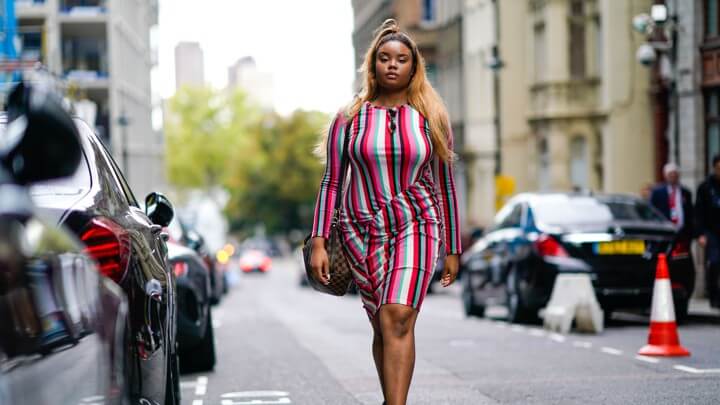Until now, fashion enterprises have largely lagged behind purchasers in responding to their developing demand for environmentally accountable, sustainable style.
Sustainable fashion has been relegated to areas of interest style manufacturers—Patagonia, Everlane, Rothy’s, Toad & Co, Eileen Fisher—and to narrow product categories in the enterprise. It has yet to be followed broadly by the mainstream and across the whole product spectrum. That will exchange and exchange speedily as Adidas steps out with a formidable new initiative to eliminate all virgin polyester (I., E. Plastic fiber) in its merchandise in 2024.

Adidas ranked No. Three in international sales in the Apparel/Accessories class in Forbes World’s Largest Public Companies list, in the back of simplest Christian Dior/LVMH and Nike, announced that through 2024 it might use most effective recycled plastics in all its footwear and clothing.
The implications for Adidas and the rest of the style industry are profound. Explaining that about 50% of the materials it uses within the over 900 million items it sells are polyester, Eric Liedtke, head of Adidas’ international brands, instructed the Financial Times, “Our goal is to take away virgin polyester normal with the aid of 2024.”Adidas’s choice follows the initial fulfillment of selling recycled plastic footwear. Its commitment has grown from a million pairs produced in 2017 to five million in 2018, with a projected eleven million teams.
“In 2018 alone, we stored more than 40 heaps of plastic waste in our places of work, retail stores, warehouses, and distribution facilities international and replaced it with greater sustainable solutions,” stated Gil Steyaert, responsible for worldwide operations, in a corporation declaration.
Virgin polyester is the mainstay fiber of the fashion enterprise. Market intelligence company Plastic Insights reviews polyester accounted for fifty-five % of the worldwide fiber market, followed by cotton with simply over one-zone proportion in 2016. In those 12 months, by myself, 76 million lots of the stuff changed into being produced globally, with a small share (a few 10% with the aid of EPA estimates) recycled.
The result is we are swimming in plastic waste. The Ocean Conservancy states, “Every 12 months, 8 million metric heaps of plastic waste enters the oceans where it joins an anticipated one hundred fifty million metric tons that already circulates there.” Not to mention the 26 million lots of plastic ending up in U.S. Landfills.
It’s not that the other fashion leaders aren’t making strides towards greater sustainability. Inditex, Zara’s discern company with $30.7 billion in revenues, has promised that by 2025, all of its collections can be made from one hundred natural, sustainable, or recycled fabrics.
Fashion industry leader LVMH has reached a settlement with Stella McCartney to bring her brand into its circle of relatives of Maisons. McCartney is arguably the industry’s leading advocate of responsible, environmentally sound, sound, and sustainable fashion. Upon joining LVMHing, it will also anticipate the role of unique sustainability advocacy. (Full info of the agreement to comply within September.)
Nike continues to “do it” concerning sustainable fabric alternatives; however, it isn’t always almost as competitive as Adidas’ just-announced plans. “As of FY18, 19% of the polyester utilized in our merchandise become recycled,” Nike shared in its FY18 Nike Impact Report. It claims Nike Air soles have been composed of 50% recycled waste since 2008.
But with Adidas’ 2024 commitment, it is hard for Nike and the relaxation of the style enterprise to move quicker towards a sustainable destiny.
The fashion industry stands accused.
Despite those high-profile steps toward sustainability, a new assessment of the fashion industry’s overall environmental performance unearths it isn’t doing close to enough. The study, Pulse of the Fashion Industry 2019 Update, performed by using Boston Consulting Group, the Global Fashion Agenda, and the Sustainable Apparel Coalition, reports that the enterprise has taken infant steps while giant steps are wished for and rapid.
“Projections suggest that by 2030 the worldwide garb and shoe industry can have grown by using eighty-one %, to 102 million heaps, exerting extraordinary stress on planetary resources,” the document states. “Fashion corporations aren’t implementing sustainable solutions rapidly enough to counterbalance terrible the unexpectedly developing fashion industry’s environmental and social influences of the money measures objectively e enterprise’s social and overall environmental overall per objectively using a yardstick called. It observed that the style enterprise had stepped forward since 2017, rising from 32 factors at the hundred-factor index to 42 points in 2019; however, it concludes, “Despite this improvement, the style enterprise remains a ways from sustainable.”
The record assigned Pulse Index ratings to businesses within three industry segments: top-rate, mid-price, and access rate. It determined that, besides the predominant players ($10 billion in sales and above) in mid-priced and entry-priced segments and to a lesser volume of top-rate players, the rest of the companies (some forty%) have failed to reach even the primary degree in the wished steps in the direction of meeting the United Nations Sustainable Development Goals or those of the Paris Agreement.
“Companies should push tougher, with greater targeted and coordinated efforts, to triumph over technological and financial boundaries that prevent progress,” the record concludes.







